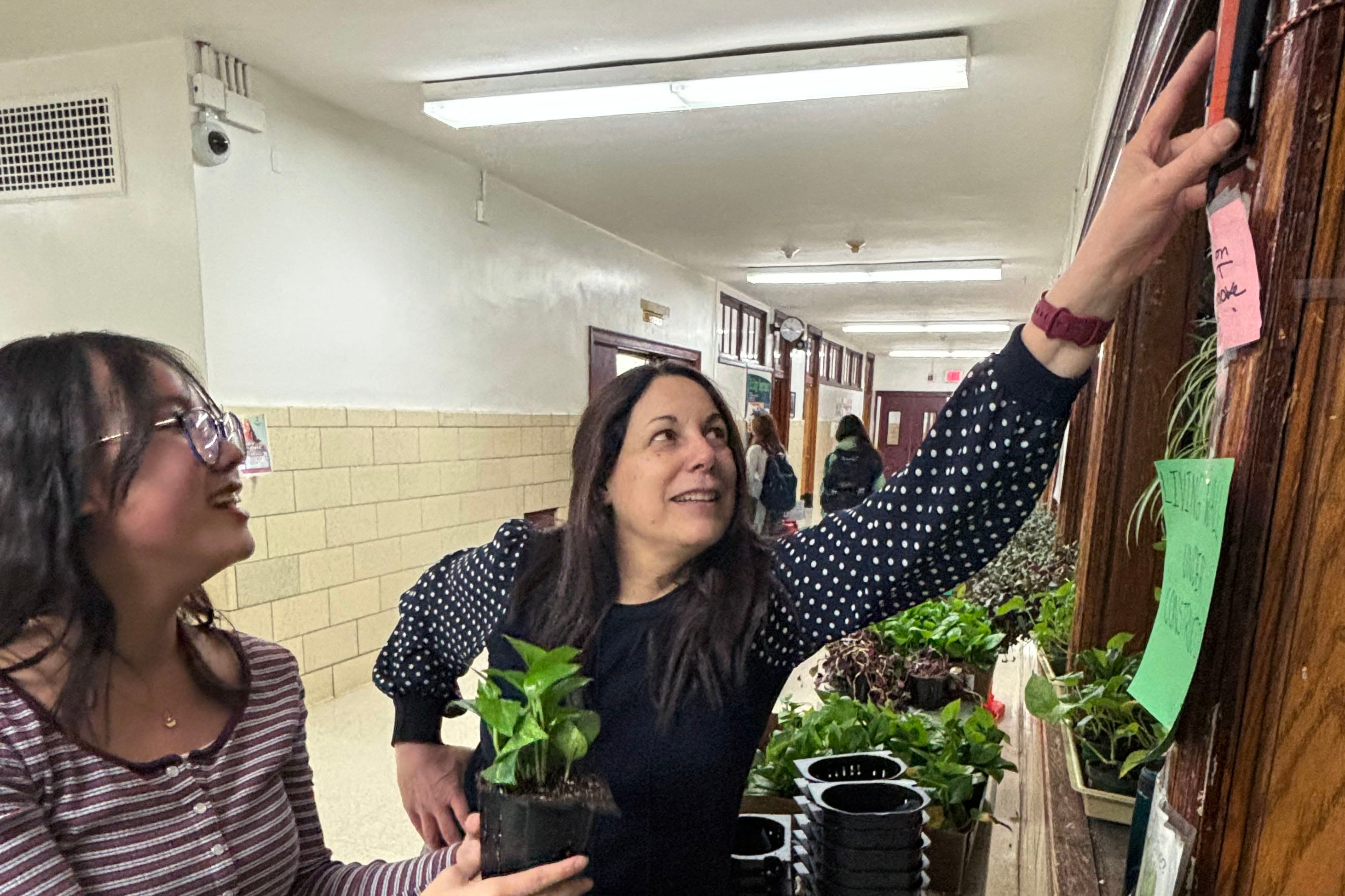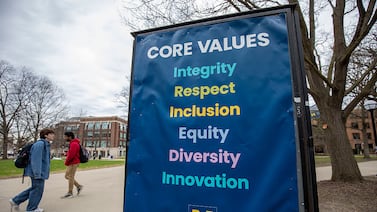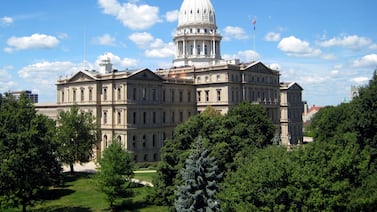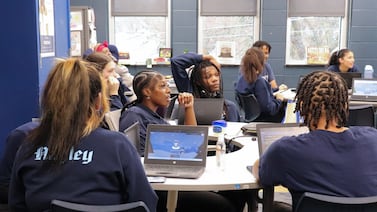In the hallway just outside of Dr. Elisa Margarita’s lab at Brooklyn Tech sits an old 20-by-4-foot trophy case that she transformed into a living plant wall.
The nearly 500 plants that grow there are not only visually appealing, but they also help clean the air and provide students with ample learning opportunities. One student’s scientific paper on the plant wall is about to be published in the Journal of Emerging Investigators, which features the work of middle and high school scientists.
“Students, regardless of whether they are in my classes, are drawn to the plants,” Margarita said. “They research the best plants for the wall, test different soils, and take care of the plants.”
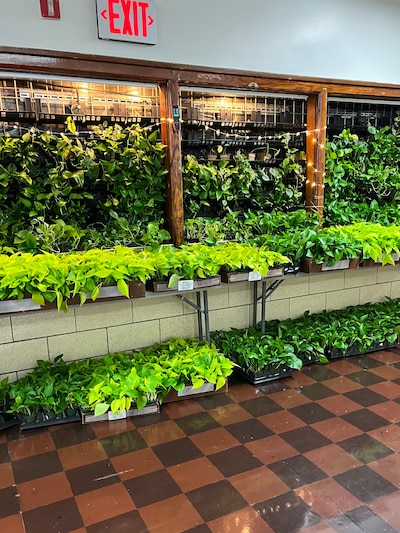
Margarita’s living laboratories have made her one of the most celebrated teachers at one of the most celebrated New York City high schools. Brooklyn Tech is also the nation’s largest high school, with roughly 6,000 students.
Margarita became a teacher about two decades ago, after working as a chiropractor for 10 years. She’s been at Brooklyn Tech since 2011, teaching AP Environmental Science as well as Scientific Research. She’s won an array of prestigious awards, including Math for America’s 2024 Muller Award for Professional Influence in Education, which comes with $20,000 for the winning teacher and $5,000 for their school. In 2022, she received the Sloan Award for Excellence in Teaching Science and Mathematics, for which winners receive $5,000 and their school receives $2,500.
Since 2015, Margarita has worked with Harvard Forest, collaborating with scientists on hands-on climate change research. As part of a nearly 40-year large-scale study, she and her students have been collecting and crowdsourcing data on nine trees in Fort Greene Park, exploring how climate change affects the urban forest’s growing season. She has also worked with Harvard Forest on a “Witness Tree Project,” where data from a tree equipped with social media and real-time data sensors is made accessible in classrooms, allowing students to observe the impacts of flash floods and droughts.
Margarita’s own school experience was largely lecture-based — a style she did not want to replicate.
“A few remarkable teachers stood out by being passionate about their topic area and engaging students beyond lectures. Their impact on me inspired my teaching approach,” she said. “I often ask myself if I would want to sit in my class and think about how I want my own children to experience school.”
This interview has been lightly edited for length and clarity.
How and when did you decide to become a teacher?
I first considered teaching in the mid-1980s, but I was also committed to the healthcare field. I put the idea of teaching on hold for about a decade, but when an opportunity to teach came up in the early 2000s, I took it and never looked back.
You turn your AP Environmental Science and Science Research classrooms into “living laboratories.” What does that mean? What does that look like?
Inside the lab, we have a trout tank where we study biodiversity, watersheds, and water quality from the moment we receive the trout eggs until we release the fingerling trout in the spring upstate.
Students also built and maintained a miniature ecosystem for three months, tracing the cycling of materials. The lab features “Big,” a 400-gallon aquaponic system mimicking a riparian zone, and a 50-gallon bog representing New York City’s pre-paved conditions, featuring marsh plants like the purple pitcherplant. We also have a pond where the water has never been changed and has no man-made filter yet continually tests pristine because the plants are doing all the cleaning.
We extend learning to Fort Greene Park, Greene Community Garden, and the school building itself. We conduct soil, water, and air quality samples inside and outside the building, assess biodiversity in Fort Greene Park, and study the impact of climate change on urban trees. We house a variety of organisms, like a snake, gecko, stick bugs, and guinea pigs, to further engage students in real-world science.
What’s your favorite lesson to teach and why?
I love teaching the lichen air quality survey lesson. We go outside to examine the lichen [a combination of fungi and algae] on street trees. Lichen are biological indicators of air quality, so by surveying and analyzing them, we can determine air quality and compare our findings with government air monitor readings in real-time.
In terms of climate change, what’s something happening in the community or world that affects or shapes what goes on inside your classroom?
Air quality has been a major issue, especially with the recent wildfires from the north affecting New York City.
Students are interested in the quality of both indoor and outdoor air and how it affects biodiversity and quality of life. We conduct indoor and outdoor air quality tests, focusing on ozone levels and particulate matter.
Another major concern is the urban heat island effect and its impact on vulnerable communities. We study tree cover maps, assess city trees, and relate canopy cover and temperature readings to these topics.
How and why do you connect your students to professional organizations for real-world experience?
When I started teaching AP Environmental Science in 2014, I sought opportunities for my students to realize they can have a voice and a possible career in the environmental field.
One notable instance was when I reached out to one of my vetted resources [through the Science Council of New York City, where Margarita is a former board member] to see if they could use an intern. They had never done this before but agreed to try it out. That student stayed with the organization throughout high school and college and eventually wrote the proposal to turn Ridgewood Reservoir in Queens into a protected site.
I continued to network and develop relationships with city and environmental agencies, always asking if they had internship programs or could take volunteers. I placed students with organizations like NYC H2O, Trees NY, Greene Community Garden, and Brooklyn Queens Land Trust. In 2017, I became a member of the Brooklyn Greene Community Garden, and in the summer of 2018, I co-started the Greene Garden summer internship program with Kate Gehring. Networking with individuals involved in environmental stewardship keeps me updated on student opportunities.
What’s the best advice you’ve ever received, and how have you put it into practice?
“You never know when you will need someone, so treat everyone with kindness.” I always try to see the good in people and maintain strong relationships with friends and colleagues.
Amy Zimmer is the bureau chief for Chalkbeat New York. Contact Amy at azimmer@chalkbeat.org.

